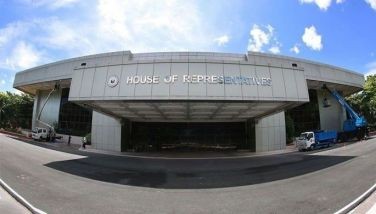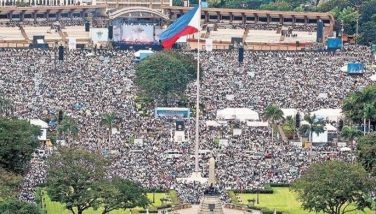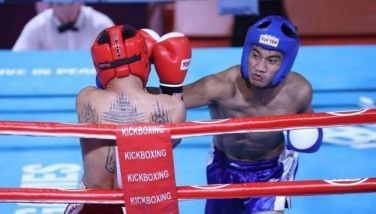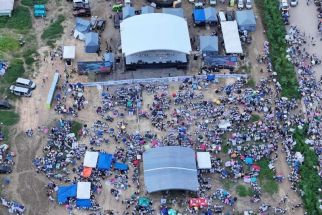Third generation hybrid rice variety in RP bred
April 20, 2003 | 12:00am
A "third generation" variety of hybrid rice has been bred in the country.
It is called SL-8H, with the common name Doña Maria after the late mother of Henry Bon Liong, chairman and CEO of SL Agritech Corp., the firm that bred the high-yielding variety.
SL-8H is now giving bountiful harvest to farmers who have adopted it.
During the latest cropping season, for instance, farmer Ernesto Pablo of Rizal, Occidental Mindoro, harvested 11.8 tons (236 cavans) in his one-hectare demonstration farm planted to Doña Maria.
Two other SL Agritech farmer-cooperators, Henry Villanueva and Romeo Dabac of Pagsanjan, Laguna, realized 180 cavans per hectare each.
Like the other hybrid and inbred (ordinary) rice varieties, SL-8H has been tested and demonstrated nationwide.
In Pangasinan and Iloilo, the yield ranged from nine to 10 tons per hectare; in Mindoro, 10 t/ha; and in Davao del Sur, 9.4 t/ha.
SL-8H bears very big panicles and matures in 115 days. It easily absorbs fertilizer. It has an excellent eating quality.
Through SL-8H, SL Agritech has been among the staunch supporters of the government‘s Hybrid Rice Commercialization Program (HRCP), the flagship program in rice of the Arroyo administration.
Among other things, it has signed a memorandum of agreement with the Philippine Rice Research Institute (PhilRice) committing itself as seed grower in support of the HRCP.
The first generation hybrid rice in the country was bred by PhilRice and the International Rice Research Institute (IRRI), with the support of the PhilRice-coordinated National Rice Research and Development Network (NRRDN). It was named PSB Rc26H, locally called Magat.
The "Mestizo" lines — PSB Rc72H (Mestizo), NSIC Rc114H (Mestizo 2), and NSIC Rc116H (Mestizo 3) — also developed by IRRI and PhilRice, constitute the second generation varieties. — Rudy A. Fernandez
It is called SL-8H, with the common name Doña Maria after the late mother of Henry Bon Liong, chairman and CEO of SL Agritech Corp., the firm that bred the high-yielding variety.
SL-8H is now giving bountiful harvest to farmers who have adopted it.
During the latest cropping season, for instance, farmer Ernesto Pablo of Rizal, Occidental Mindoro, harvested 11.8 tons (236 cavans) in his one-hectare demonstration farm planted to Doña Maria.
Two other SL Agritech farmer-cooperators, Henry Villanueva and Romeo Dabac of Pagsanjan, Laguna, realized 180 cavans per hectare each.
Like the other hybrid and inbred (ordinary) rice varieties, SL-8H has been tested and demonstrated nationwide.
In Pangasinan and Iloilo, the yield ranged from nine to 10 tons per hectare; in Mindoro, 10 t/ha; and in Davao del Sur, 9.4 t/ha.
SL-8H bears very big panicles and matures in 115 days. It easily absorbs fertilizer. It has an excellent eating quality.
Through SL-8H, SL Agritech has been among the staunch supporters of the government‘s Hybrid Rice Commercialization Program (HRCP), the flagship program in rice of the Arroyo administration.
Among other things, it has signed a memorandum of agreement with the Philippine Rice Research Institute (PhilRice) committing itself as seed grower in support of the HRCP.
The first generation hybrid rice in the country was bred by PhilRice and the International Rice Research Institute (IRRI), with the support of the PhilRice-coordinated National Rice Research and Development Network (NRRDN). It was named PSB Rc26H, locally called Magat.
The "Mestizo" lines — PSB Rc72H (Mestizo), NSIC Rc114H (Mestizo 2), and NSIC Rc116H (Mestizo 3) — also developed by IRRI and PhilRice, constitute the second generation varieties. — Rudy A. Fernandez
BrandSpace Articles
<
>
- Latest
Latest
Latest
May 14, 2024 - 3:43pm
By Ian Laqui | May 14, 2024 - 3:43pm
April 10, 2024 - 5:12pm
By Ian Laqui | April 10, 2024 - 5:12pm
March 4, 2024 - 3:32pm
By Ian Laqui | March 4, 2024 - 3:32pm
March 4, 2024 - 2:12pm
By Kristine Daguno-Bersamina | March 4, 2024 - 2:12pm
February 17, 2024 - 2:31pm
February 17, 2024 - 2:31pm
Recommended




























